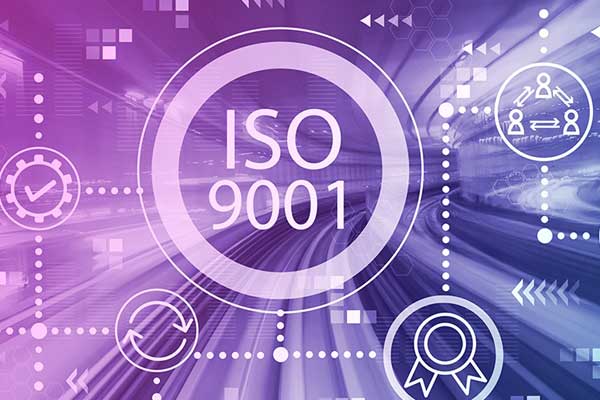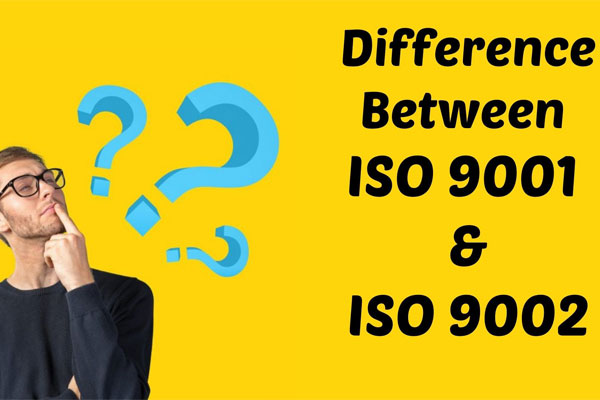One of our customers asked an exciting question to one of the ISO 9001 consultants. He asked that if chronologically, ISO 9002 comes after ISO 9001, why is ISO 9001 more popular? This question made us realise that many of you would not be aware of the differences between these two standards. To answer your query, we have written the following blog.
What is an ISO standard?
Let us start with the very basics. ISO standards are a set of recommendations developed by the International Organization for Standardization (ISO), the parent organisation, to help organisations improve in specific management sectors. Examples of these management sectors can vary from occupational safety to enhancing the quality of your products and services. The critical thing to remember about ISO standards is that they are all voluntary, which means that getting ISO certified is not mandatory or legally required.
This implies that any organisation that obtains ISO certification must put in their own time, resources and effort to build its management system, get compliance and achieve certification. The reward of this due diligence is that getting ISO certified gives organisations countless benefits, such as better business insight, greater transparency, enhanced operational capabilities, better employee engagement, more profits, reduced redundancies, and international acclamation for their management system.

What is ISO 9000?
The ISO 9000 family is a group of five standards from which both ISO 9001 and ISO 9002 originate. This entire family of standards aims to ensure that organisations can consistently meet customer needs and stakeholder expectations while maintaining their Quality Management System (QMS). Initially this standard was first published in 1987 and was based on the British standard called BS 5750, which was developed in 1979. The goal of this ISO family of standards was to create variety in applicability so businesses could choose the version of the standard that was the most applicable to them and achieve certification.
What is ISO 9001?
The ISO 9001 standard essentially provides guidelines for a QMS, helping organisations understand the customers’ requirements and modify their processes according to those recommendations. The focus of this standard is customer satisfaction, aiming to help minimise the cost of production without compromising on quality. The latest version of this standard was revised in 2015, and due to its relevance, it is one of the most popular standards globally.
What is ISO 9002?
ISO 9002 belongs to the family of ISO 9000 and contains a model for quality assurance for the production, servicing and installation of products. It has almost all the guidelines outlined in ISO 9001, but it does not cater to creating newer products.
ISO 9001 versus ISO 9002
Let us first begin by listing the similarities. Both standards belong to the ISO 9000 family and aim to improve quality management. The difference between ISO 9001 and ISO 9002 is that ISO 9000 has specific guidelines or recommendations for quality assurance in design, installation and production, whereas the guidelines of ISO 9002 are limited to production, servicing and installation. ISO 9002 was discontinued many years ago as ISO 9001 contains all the necessary requirements for implementing an efficient QMS.
Why did ISO 9001 replace ISO 9002 and ISO 9003?
As mentioned above, the ISO 9000 family contains three models, allowing organisations to select the most suitable framework. However, in 2000, the three versions of the standard were merged into a single standard, namely, the ISO 9000:2000 standard. The standard had new concepts built into it, including the well-known and popular process-based approach. Moreover, in addition to the process approach, businesses were now given the liberty to exclude specific parts of the standard that did not apply to them. This was the first in the history of the ISO 9000 family. Also, ISO understood that keeping multiple versions of the same standard rendered them useless and increased the confusion of business owners. Hence, it made the decision to merge and update all the standards to create ISO 9001, which was more explicit instructions.

What happened to the companies that were ISO 9002 or ISO 9003 certified?
The companies that were previously certified to ISO 9002 or ISO 9003 did not lose a purpose-built system but instead gained a system that was more flexible to the changing needs of the business. After the transition and certification to ISO 9001, such companies could deliver more benefits, and excessive paper trials were stripped off.
What happened in the ISO 9001:2015 revision?
The 2015 revision was significant and had the most noticeable changes. During this revision, the standard adopted a new High-Level Structure (HLS) that is technically called the “Annex SL structure.” The benefit of this structure is that it makes it easier to integrate multiple management systems without having to rely on the usage of PAS 99. So, organisations that adopt ISO 9001:2015 can quickly adopt ISO 27001, ISO 14001 or ISO 45001.
Also read “Difference between ISO 9001 and ISO 22716”
Conclusion
ISO 9002 is currently obsolete and superseded by ISO 9001:2000 revision. ISO 9002 had the exact instructions as ISO 9001 but did not contain recommendations for design requirements. These days, all organisations can use ISO 9001:2015 version and exclude those sections that do not apply to them.








Users Comments
Get a
Quote